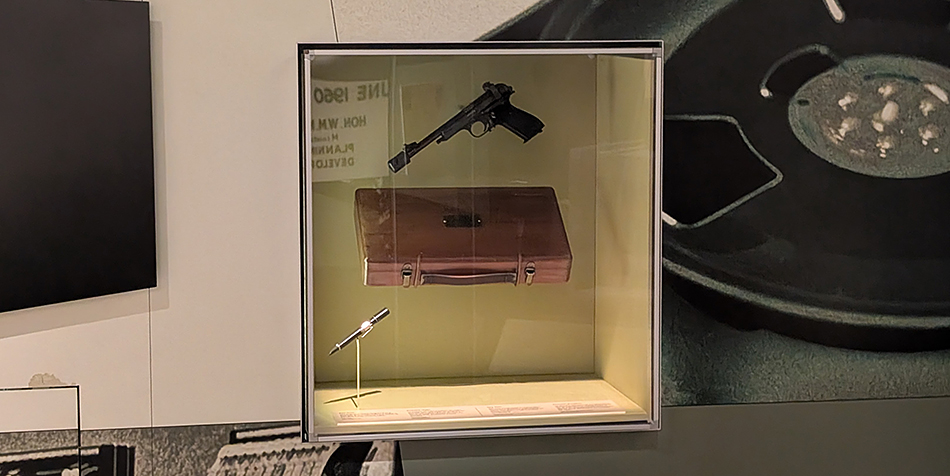“June 6th Landed in France 2000 hrs at Graye-Sur-Mer. We were under fire of German Guns. Several rounds being very close.”
Canadian war artist Orville Fisher scrawled those words in a small notebook he carried ashore on the morning of D-Day. Attached to the 3rd Canadian Division, Fisher was the only war artist to land as part of the invasion of Normandy, the beginning of the Allies’ liberation of France in 1944.
Many of the paintings that grace the collection of the Canadian War Museum today were worked up from sketches and watercolours that Fisher made during the invasion. Ranging from an otherworldly depiction of Canadian troops running through the wreckage of Carpiquet airfield, to his portrayal of the chaos and confusion on the landing beach, Fisher’s art gives us an intense, immediate feel for the invasion and the fighting that ensued. Now, thanks to the gift his family made to the Museum in 2013, we have a written account of his time in Normandy.
Fisher used the notebook to record the day’s weather, his location and more general details about his activities and what was going on around him (June 8: “Snipers are very active, had a number of close ones yesterday”; June 11: “Raining off and on all day, very dull & grey. Worked under cover”). He also made a list of paintings he was working on, along with their dates.
Given the fact that Fisher was writing while serving on the front line, it’s not surprising that the diary is not in the best condition. “At some point,” says Carol Reid, Collections Specialist, Archives, at the Canadian War Museum, “it got wet and then exposed to mud, and the moisture pulled the mud into the fibre of the paper.” As a result, many of the pages are stuck together. A conservator is working on how to remove the spiral binding, in order to separate and clean each page.
After this task is complete, the diary will be stored in a temperature- and humidity-controlled environment. But, says Reid, “it will be available to anybody who’s interested in war artists, or D-Day or a wide range of other topics.”
“It’s great to have the paintings, she says, “but having Fisher’s words — that brings him to life.”

Orville Fisher, D-Day – the Assault / CWM 19710261-6231 ©Beaverbrook Collection of War Art



